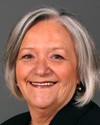I will.
Thank you very much. It's an honour to be here.
Having spoken with both the clerk and the analyst who is supporting your efforts, I thought it would be appropriate for me to address three questions today.
First, will the increased labour force participation of women affect their retirement income security?
I'm going to give short answers and then explain them.
The short answer to that question is yes, the change is already evident in data on incomes of older women, and there's much more to come. However, I will also forewarn you that it doesn't appear that there's any immediate prospect of establishing equality between the incomes of older men and older women.
The second question I'll speak to is whether there are gender-specific retirement income issues that the committee might note. My answer is yes, there are a number of issues to be addressed in all pillars of Canada's retirement income system.
Finally, are there important pension issues that are not gender-specific, but which will be very important to women? The answer is yes, there are some very serious problems facing the third pillar of Canada's retirement income system, and these are not gender-specific problems, but they will have an important impact on women.
I should say that I will use this term “gender-specific” to refer to both workplace pensions as well as registered retirement savings plans and the income that each of those institutions generates. I should warn you too that my presentation is oriented more towards identifying problems than it is to telling you what the right answer is to solve the problem.
First of all, let's talk about the increased labour force participation of women and current retirement income prospects of older women.
I have, by way of background to what I'm going to say now, prepared some tables, which the clerk has indicated she will have translated and circulated to you. If you don't catch all the numbers as I'm speaking, don't worry, they will catch up with you at some point.
I want to note that over the period between the early 1980s, which is the earliest period for which I was looking at income data, through to 1996, there was a stubborn stability in the ratio of women's income to men's among people over 65. The women's income seemed to be stuck at about 62% of men's income. Happily, between 1996 and 2006 that gap has closed slightly, but only slightly, so that by 2006 the average income of individual women over 65 was 68% of that of older men.
The second thing I'd note about incomes of older women compared with those of older men is that over that period from 1981 to 2006, the sources of women's income in old age changed. They changed in ways that made the sources look more like men's income, in the sense that income from the Canada and Quebec pension plans and third-pillar income grew faster than other sources of income.
At the beginning of the period, women were getting about 7% or 8% of their income from each of the Canada and Quebec pension plans and the third pillar. By the end of this period of observation, which is 2006, women were getting about 20% of their income from the Canada and Quebec pension plans and about 30% from workplace pensions. You can see that these two sources of income, which in effect reflect your working career, became more important over this period of time.
I would point out, though, that there's a bit of a difference in the period when these incomes grew. That is, most of the increase in income from the Canada and Quebec pension plans took place between 1981 and 1996. After that, it was a fairly stable portion of older women's income that came from the Canada and Quebec pension plans. In the case of third-pillar income, which as I said includes workplace pensions and RRSPs, the income from that source was growing right through to the end of the period of observation, which is 2006.
The last thing I want to say is that if you look at income coming from the Canada Pension Plan, you notice that the number of female contributors compared to the number of male contributors grew over the whole period from 1966, when the plan was created, until 2006. Back in 1966, there was only one woman contributor for every two men. By 2006, there were 90% as many women contributors as there were men contributors. There was also a tendency towards equalization in retirement benefit payments to women versus men over that 40-year period. So at the start of the period, retirement benefits paid to women were only 64% of the benefits paid to men, and by the end of the period, it was up to 82%. The chief actuary, in his latest regular actuarial report on the Canada Pension Plan, predicts that those gaps will keep getting narrower, but you never reach equality, at least by 2050, which is the end of the timeframe assessed by the chief actuary.
Moving on to some gender-specific issues, I'm going to limit myself to some comments on old age security and the guaranteed income supplement. I'm going to talk about it in relation to the objective of eliminating poverty in old age.
There have been some quite comprehensive studies done of poverty among the elderly in Canada in the recent past. I'm thinking of two articles in particular in a recent edition of Canadian Public Policy: one prepared by Kevin Milligan and another prepared by Mike Veal. They both paint a picture of substantial decline in poverty rates among the elderly in Canada over the period from the late 1970s to the early 2000s.
In fact, Canada now has one of the lowest rates of elderly poverty in the high-income part of the world. But there are two things. One is that there are some subsets of the elderly population with noticeably higher rates of poverty than the elderly population as a whole. One of those population subsets is single elderly women, especially people who are widowed or divorced. Further research on the widowed part of that story has also been done in a Statistics Canada study by Bernard and Li, which you may want your staff to have a look at.
I'll add with regard to the low rates of poverty that there are some real debates about how to define and how to measure poverty. These debates are actually quite important in looking at the situation of the elderly poor, because the incomes of the elderly poor are much more strongly concentrated near the low-income lines than is true of the non-elderly population. So if you move those lines even a small amount, you start moving significant numbers of the elderly from one side of the line to the other. You may want to be sensitive to that, because you may get conflicting testimony on what portion of the elderly population has an income below the poverty line.
Looking ahead, there are a couple of policy issues you may want to think about. One is that through old age security and the guaranteed income supplement, we offer minimum income guarantees to elderly couples and elderly singles. It is striking that the guarantee to elderly couples is 1.6 times the guarantee made to elderly singles. Usually when people are trying to equilibrate incomes between couples and singles, the factor that is used to equilibrate them is 1.4, not 1.6, which is to say we're making a somewhat stronger commitment to elderly couples, it would seem, than to the single elderly. So you may want to think about that especially in relation to the problem of single elderly poverty rates.
The other thing that is very important going forward is what kinds of adjustments will be made to old age security and GIS in the future. I say this because those programs are price indexed. Generally speaking, price indexing is a good thing. Over the last 25 years or more, average wages have not grown in relation to prices, so old age security and GIS have also maintained not only their purchasing power but also their value compared to average wages and salaries. The chief actuary is expecting that labour markets will tighten up under the demographic circumstances we're facing in the future, and I think he's right. Real wage growth is likely to begin. If that's true, then OAS and GIS will start falling compared to average wages, and they will likely fall in relation to poverty rates.






